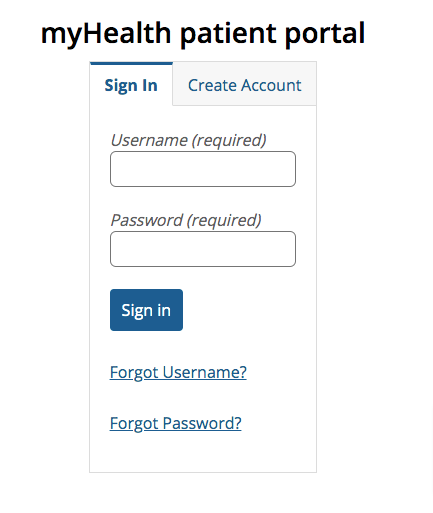If you are looking for the Myhealth Patient Portal login access. then you are landing at the right place here.
Patients can view their health records and communicate with their doctors easily and privately using the MyHealth Patient Portal. Patients can use the portal to take charge of their health care from the comfort of their own homes or anywhere with an internet connection.
To access the MyHealth Patient Portal, users must first register an account. Participants are required to authenticate their identities and provide personal information during the registration process. After signing up, patients are given their own username and password to access the site.
After logging in, patients are met with an intuitive dashboard that provides access to numerous tools and functions. The ability to examine and access one’s own health records is a major perk of the MyHealth Patient Portal. Patients get access to their whole medical record, which includes test results, prescriptions, allergies, and diagnoses. Patients can use this all-encompassing summary to learn about their health and monitor their improvement over time.
The portal’s communication features are also important. Patients can now communicate with their healthcare professionals in a safe and private way to get answers to inquiries, renew prescriptions, and make appointments. This line of communication between patients and doctors improves teamwork, shortens treatment times, and cuts down on unnecessary visits and phone calls.
MyHealth Patient Portal also helps with scheduling doctor visits. Patients can check their schedules, set up appointment reminders, and book new appointments whenever they like. This aids productivity and keeps patients well organized.
MyHealth Patient Portal Login
Certainly! Here are simplified steps for logging in to the MyHealth patient portal:
- Visit the MyHealth patient portal website.
- Look for the login section or link on the homepage.

- Now Enter your username or user ID in the designated field.
- Provide your password in the password field.
- Click on the “Login” or “Sign In” button.
- Access your MyHealth patient portal account.
Remember to log out when you’re done using the portal, especially on shared or public devices.
Myhealth Patient Portal Login Forget Password
If you forget your password for the MyHealth Patient Portal login, there are typically steps you can follow to reset it. Here’s an overview of the typical password recovery process:
- Visit the MyHealth Patient Portal login page.
- Now click on the forget password link.
- You will be re-directed to the new page.

- Now enter your username and email address.
- Now click on the reset password button.
- Check your email address and reset your password.
It’s important to note that the exact steps and process may vary slightly depending on the specific implementation of the MyHealth Patient Portal by your healthcare provider. If you encounter any difficulties during the password recovery process, it’s recommended that you contact your healthcare provider’s support or IT department for further assistance.
FAQ
Here are some frequently asked questions (FAQs) related to the MyHealth Patient Portal login:
How do I create an account on the MyHealth Patient Portal?
Creating an account in the MyHealth Patient Portal requires going to either the portal’s website or the website of your healthcare provider. Find a place to sign up or register, and then follow the on-screen prompts to fill in your details (name, email address, etc.).
What if I forget my username?
Most portals have a “Forgot Username” link on the login page in case you ever forget it. If you’ve forgotten your username or need to reset it, select this option and follow the on-screen instructions. In order to confirm your identification, you will typically be required to supply your registered email address.
What should I do if I forget my password?
On the login screen for the MyHealth Patient Portal, you should see a “Forgot Password” or “Reset Password” option if you have forgotten your password. To change your password, select this option and stick to the prompts. Password resets typically necessitate some form of identification verification, such as an email, a phone call, or answering security questions.
How can I change my password?
To change your password, log in to the MyHealth Patient Portal using your current login and password. After you have signed in, you can change your password by going to the account settings or profile page. To create a new password, reply with the requested information as directed.
Can I access the MyHealth Patient Portal from my mobile device?
Yes, many MyHealth Patient Portals offer mobile apps or have a mobile-friendly website. You can download the app from the relevant app store or access the portal through your mobile device’s web browser. The login process is typically the same as accessing it from a computer.
What should I do if I am having trouble logging in?
If you are experiencing difficulties logging in, first double-check that you are entering your username and password correctly. Make sure that you don’t have any typos or incorrect capitalization. If the issue persists, you can contact the support or IT department of your healthcare provider for assistance.
Is my personal health information secure on the MyHealth Patient Portal?
MyHealth Patient Portals prioritize the security and privacy of patient information. They typically employ encryption technologies, secure server connections, and strict data protection measures to ensure the confidentiality of your health records. It’s important to follow best practices, such as using strong passwords and not sharing your login credentials with anyone, to further enhance the security of your account.
Remember that the specific features, functionalities, and login processes of the MyHealth Patient Portal may vary depending on your healthcare provider. If you have specific questions or concerns, it’s best to refer to the documentation or contact your healthcare provider’s support team for accurate information.